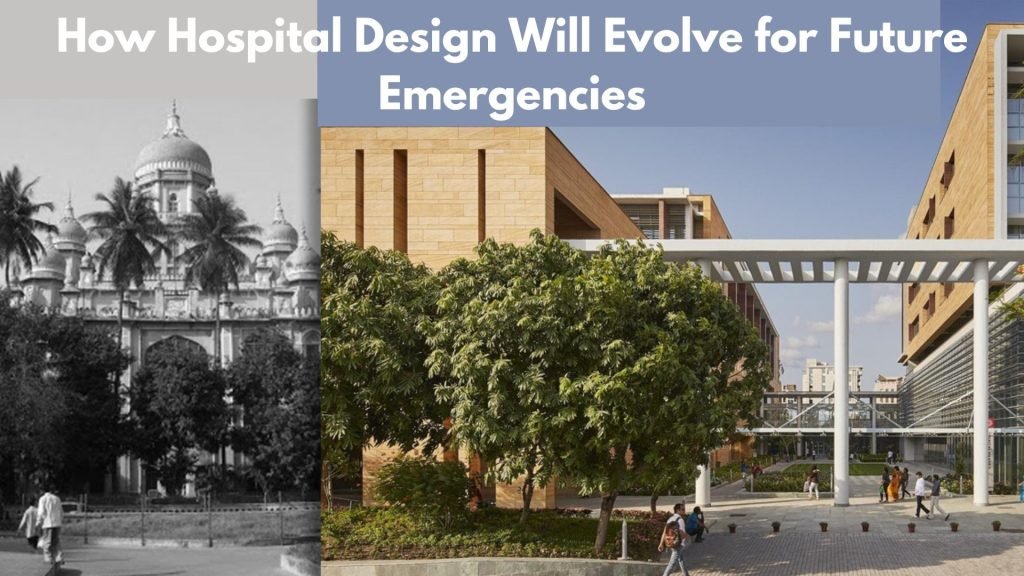
How Hospital Design Will Evolve for Future Emergencies
[ad_1]

“Adaptability is about the powerful difference between adapting to cope and adapting to win.” – Max McKeown
In the wake of recent global events, the healthcare industry is undergoing a profound transformation, with hospital design at the forefront of this evolution. The COVID-19 pandemic, natural disasters and other unforeseen emergencies have underscored the critical importance of preparedness and flexibility in healthcare infrastructure. As we stand at the crossroads of the future, it is increasingly clear that hospital design must evolve to meet the challenges and uncertainties that lie ahead.
The hospitals of the future will be defined by their resilience. Resilience in hospital design means the ability to withstand, adapt to, and rapidly recover from various shocks and stresses, whether they are caused by a global health crisis, extreme weather events, natural and manmade disasters or other emergencies. This resilience will be built upon several key pillars:
1. Modular and Adaptable Spaces: Hospitals will have to incorporate modular design principles, allowing spaces to be quickly reconfigured to meet changing demands. Flexible patient rooms, adaptable treatment areas, and convertible wards will have to become standard features.
2. Telemedicine Integration: The pandemic accelerated the adoption of telemedicine, and the hospitals of the future will seamlessly integrate telehealth capabilities. Design will include dedicated telemedicine suites and enhanced IT infrastructure for remote consultations.
3. Infection Control: Hospitals will prioritize infection control in their design, with enhanced ventilation systems, isolation rooms, and protective barriers. The layout will facilitate efficient patient flow while minimizing the risk of cross-contamination.
4. Surge Capacity: The ability to rapidly expand hospital capacity will be integral. This includes the construction of temporary field hospitals, surge wings, or adaptable spaces within the existing facility to accommodate a sudden influx of patients.
5. Sustainable Resilience: Hospitals will increasingly embrace sustainable design practices to enhance resilience. This includes energy-efficient systems, renewable energy sources, and disaster-resistant construction materials.
Technology Integration
Advanced technologies will play a pivotal role in the hospitals of the future. Artificial intelligence (AI) will assist in patient care, diagnostics, and hospital management. Robotics will take on a more prominent role in tasks like disinfection and delivery. Remote monitoring and wearable devices will allow healthcare providers to track patients’ health in real-time, reducing the need for in-person visits.
Community Engagement
Hospitals will be deeply integrated into their communities. They will not only serve as centres for healthcare but also as hubs for disaster response and community support. Engaging with local communities in emergency preparedness and response will be a central tenet of hospital design.
Reskilling and Training
As hospital design evolves, so too will the skills and training of healthcare professionals. Continuous education and training will be essential to adapt to new technologies, protocols, and emergency response strategies.
Digitalization of Supply Chain
Hospital supply chains will become highly digitalized and automated, utilizing technologies like RFID tracking and AI-driven demand forecasting. This ensures efficient inventory management, reducing shortages during emergencies. Hospitals will increasingly prioritize local sourcing and on-site storage of critical supplies to mitigate disruptions caused by global crises, ensuring a more reliable supply chain.
Emergency Response:
Hospital designs will prioritize flexibility, with modular layouts and adaptable spaces. This enables quick transformation to surge capacity during emergencies, accommodating a larger number of patients. Future hospital designs will seamlessly integrate telemedicine infrastructure. This allows for remote triage and care, reducing the burden on physical facilities during crises and improving resource allocation.
The Road Ahead
The challenges of the future are dynamic and unpredictable. Therefore, the hospitals of the future must be equally dynamic and adaptable. Hospital design will evolve not as a response to a single crisis but as a reflection of our collective learning from a multitude of challenges. It will be driven by the unwavering commitment to provide the best care to every patient, under any circumstance.
In this journey of evolution, expertise from leaders like Astron in hospital planning and design will illuminate the path forward. As Winston Churchill wisely noted, “We shape our buildings; thereafter they shape us.” The hospitals of the future, crafted with dedication and guided by experience, will stand as beacons of resilience, offering healing and hope to all who need it, no matter what challenges tomorrow may bring.
[ad_2]
Source link



